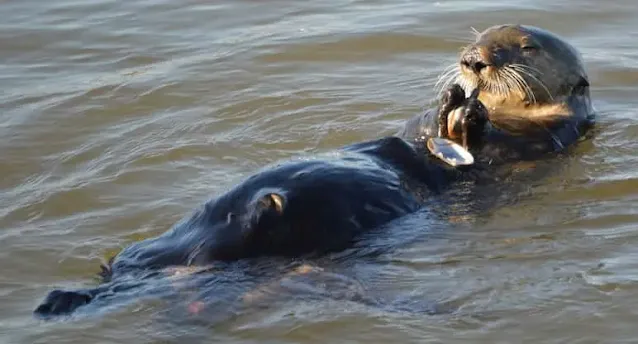Sea Otters Vs River Otters - Find the Difference
We usually think of otters as the cute tiny aquatic creatures who float on their backs and massage their cheeks in viral videos, but how can we identify the difference between river and sea otters? What distinguishes each species, and what distinguishes each from the others?
Simple classification
There is only one species of sea otter, according to taxonomy! The sea otter (Enhydra lutris) is divided into two regional subspecies, the Northern sea otter and the Southern sea otter, although it is the only otter species that spends its entire existence in the water.
The river otter, on the other hand, comes in 12 different species, ranging from the North American river otter to the Japanese river otter to the Asian small-clawed otter. Rivers, lakes, and freshwater marshes are home to the remaining otters.
The Marine otter (Lontra felina), the only otter species other than the Sea otter that lives in and around saltwater settings, is the lone exception to these restrictions. The difference between these two species is significant: the sea otter spends its entire existence afloat in the ocean, swimming, feeding, and reproducing. The marine otter lives near the water and only dives in to feed.
Physical Dissimilarities
Once we realize that there is only one species of true sea otter, understanding the morphological differences between sea otters and river otters becomes rather simple. The sea otter we know is far larger than the normal river otter, with the largest adults weighing up to 100 pounds, making it even heavier than the largest river otter, the Giant otter (Pteroneura brasiliensis).
The contrast in fur types is instantly noticeable: river otters have short, sleek fur, whereas sea otters have long, fuzzy fur that is exceptionally dense and warm. Sea otters have two huge back feet that are webbed and streamlined for paddling and fast swimming in choppy ocean conditions. The legs of a sea otter, unlike those of a river otter, are designed for constant swimming rather than walking.
Location
It may seem apparent, but paying attention to the body of water you're looking at is the easiest way to know if you're looking at a river otter or a sea otter! River otters will be found in the river, whereas sea otters will be found in the sea. That's all there is to it! Although some river otters can be found in marshes and lakes, the usual rule is that if an otter isn't floating in the ocean, it's most likely a river otter, and vice versa!
Last Thoughts
Although river otters and sea otters share the same name, these two classifications and populations are very different in many ways, much like dogs have various breeds.
Furthermore, if you understand the basics of what to look for, distinguishing between a sea otter and a river otter is simple: one is huge and fluffy, while the other is small and streamlined. Always remember where you're looking - if you're staring at the ocean, you're probably looking at a sea otter rather than a river otter. This is true in both directions!


.webp)
